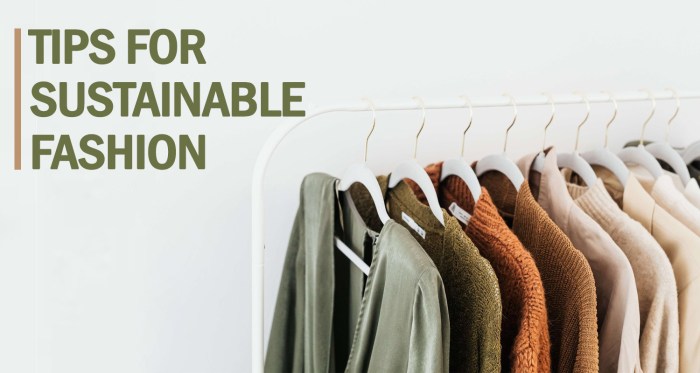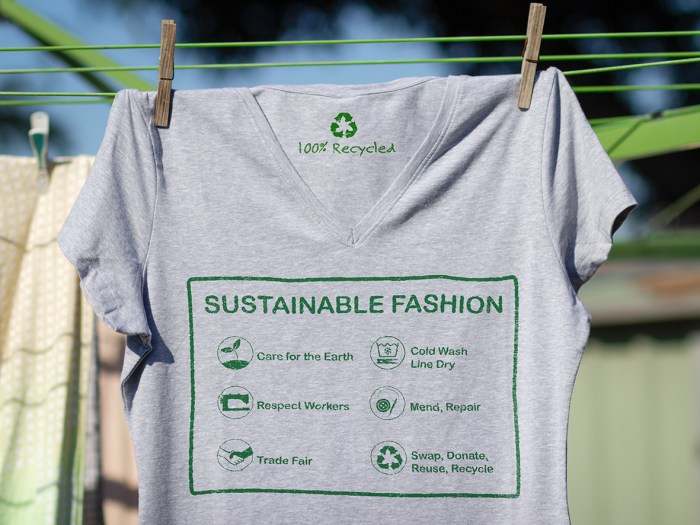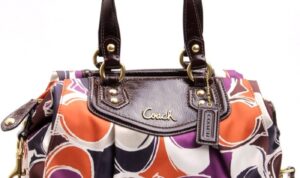Sustainable fashion tips bring a fresh perspective on eco-friendly fabric choices, ethical manufacturing practices, shopping habits, and upcycling trends, creating a buzz in the fashion scene. Get ready to dive into a world where style meets sustainability in the coolest way possible.
Sustainable Fabric Choices

When it comes to sustainable fashion, choosing the right fabrics can make a big difference in reducing environmental impact. Here are some eco-friendly fabric options to consider:
- Organic Cotton: Organic cotton is grown without the use of harmful pesticides or synthetic fertilizers, making it better for the environment and the farmers. By choosing organic cotton over conventional cotton, you can help reduce water pollution, soil erosion, and the overall carbon footprint of your clothing.
- Tencel: Tencel, also known as lyocell, is a fabric made from sustainably sourced wood pulp, usually from eucalyptus trees. The production process of Tencel is closed-loop, meaning that the solvents used are recycled and reused, minimizing waste and water usage. Tencel is known for its softness, breathability, and biodegradability, making it a great choice for eco-conscious consumers.
- Recycled Materials: Fabrics made from recycled materials, such as recycled polyester or recycled nylon, help divert waste from landfills and reduce the need for virgin resources. These fabrics can be just as durable and high-quality as their conventional counterparts, but with a much lower environmental impact.
Ethical Manufacturing Practices: Sustainable Fashion Tips

When it comes to sustainable fashion, ethical manufacturing practices play a crucial role in creating a positive impact on both the environment and the people involved in the production process. Fair wages and safe working conditions are essential components of ethical manufacturing, ensuring that garment workers are treated with dignity and respect.
Certifications for Ethical Manufacturing
- One example of a certification that ensures ethical manufacturing in the fashion industry is Fair Trade Certification. This certification guarantees that workers are paid fair wages and work in safe conditions.
- Another important certification is the Global Organic Textile Standard (GOTS), which ensures that textiles are produced in an environmentally and socially responsible manner.
Fast Fashion vs. Slow Fashion Impact on Garment Workers
- Fast fashion often leads to exploitation of garment workers through low wages, long hours, and unsafe working conditions in order to meet the demand for cheap and trendy clothing.
- In contrast, slow fashion prioritizes ethical manufacturing practices, paying fair wages and providing safe working conditions for garment workers, even if it means a slower production process and higher prices for consumers.
Transparency in the Supply Chain
Transparency in the fashion supply chain is crucial for promoting ethical manufacturing practices. When brands disclose information about where and how their products are made, consumers can make informed choices and support companies that prioritize fair treatment of workers. By increasing transparency, the fashion industry can move towards a more sustainable and ethical future.
Sustainable Shopping Habits
Building a sustainable wardrobe doesn’t have to be complicated. By adopting a few key habits, you can make a positive impact on the environment while still looking stylish.
Building a Versatile Capsule Wardrobe
- Focus on timeless pieces that can be mixed and matched easily.
- Invest in high-quality basics like a white shirt, black pants, and a versatile blazer.
- Choose neutral colors that can be paired with multiple outfits.
Renting or Swapping Clothes
- Consider renting special occasion outfits instead of buying new ones.
- Participate in clothing swap events with friends or online communities.
- Explore online platforms that facilitate clothes sharing and swapping.
Shopping for Quality Pieces
- Check the fabric composition and opt for natural, sustainable materials like organic cotton or linen.
- Look for well-made items with sturdy stitching and durable construction.
- Invest in pieces that have timeless designs and won’t go out of style quickly.
Avoiding Impulse Buying
- Think about each purchase carefully and consider if it aligns with your personal style and wardrobe needs.
- Avoid shopping when you’re feeling stressed or emotional, as this can lead to impulse buys.
- Set a budget for clothing purchases and stick to it to prevent unnecessary splurges.
Upcycling and Repurposing
Upcycling and repurposing are innovative ways to breathe new life into old clothing items, reducing waste and promoting sustainability in fashion. Upcycling involves transforming unused or discarded materials into new products of higher quality or value. On the other hand, repurposing refers to finding new uses for items that may have otherwise been thrown away.
DIY Ideas for Upcycling Old Clothing, Sustainable fashion tips
- Turn old jeans into trendy denim shorts by cutting them to the desired length and adding unique embellishments like patches or studs.
- Transform an oversized t-shirt into a stylish crop top by cutting it to the desired length and adding a fun twist like a tie-front detail.
- Create a fashionable tote bag from old fabric scraps by sewing them together and adding sturdy straps for functionality.
Creativity in Repurposing Materials
Repurposing materials requires thinking outside the box and seeing the potential in items that may seem unusable at first glance. By repurposing old clothing or fabrics, individuals can showcase their creativity and reduce the environmental impact of fashion waste.
Clothing Brands Using Upcycled Materials
- Patagonia: The outdoor apparel brand incorporates recycled materials like plastic bottles into their clothing to reduce the demand for new resources.
- Eileen Fisher: This sustainable fashion brand offers a take-back program where customers can return old Eileen Fisher garments to be upcycled into new pieces.
- Reformation: Known for their commitment to sustainability, Reformation uses deadstock fabrics and upcycled materials in their collections to minimize waste.





